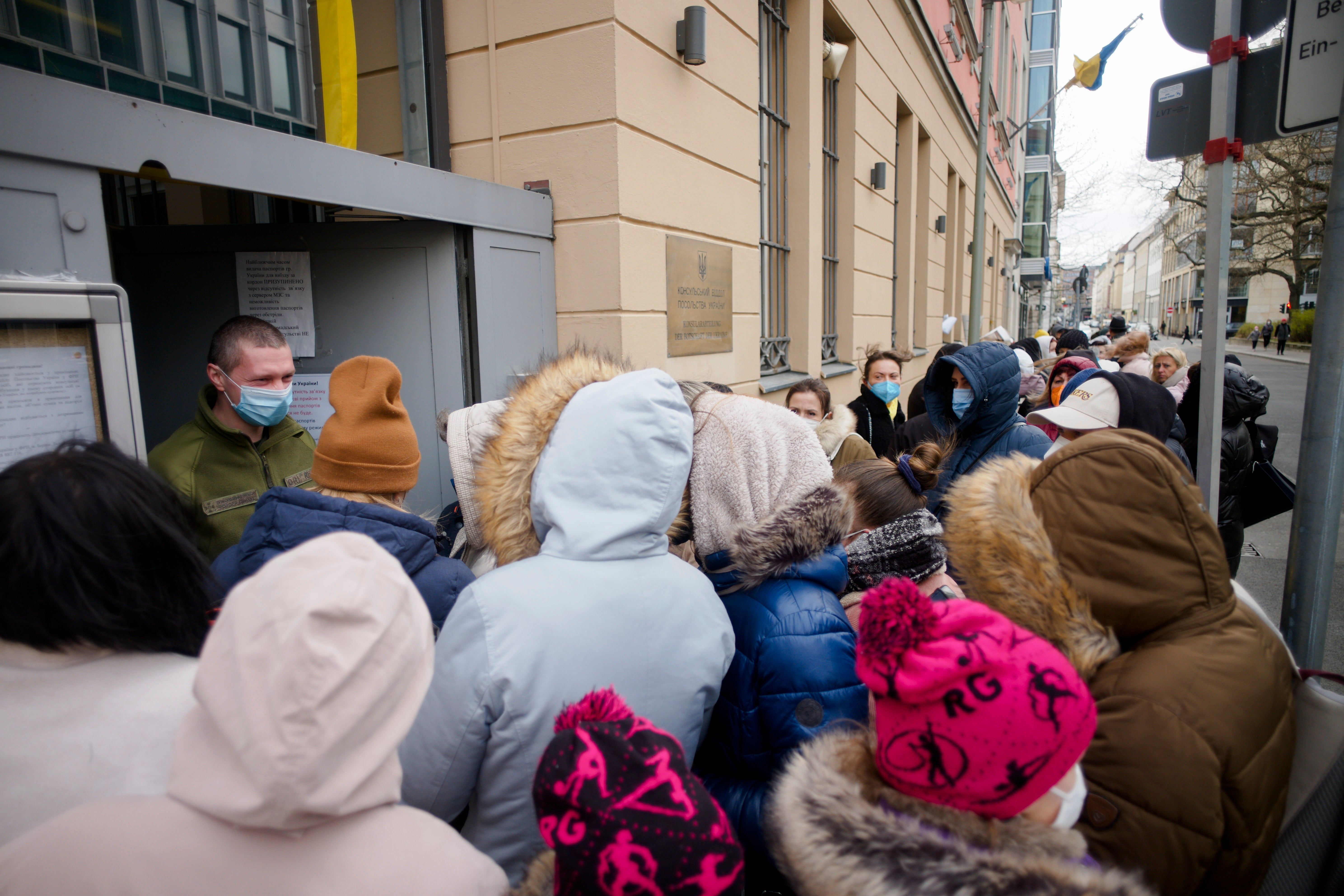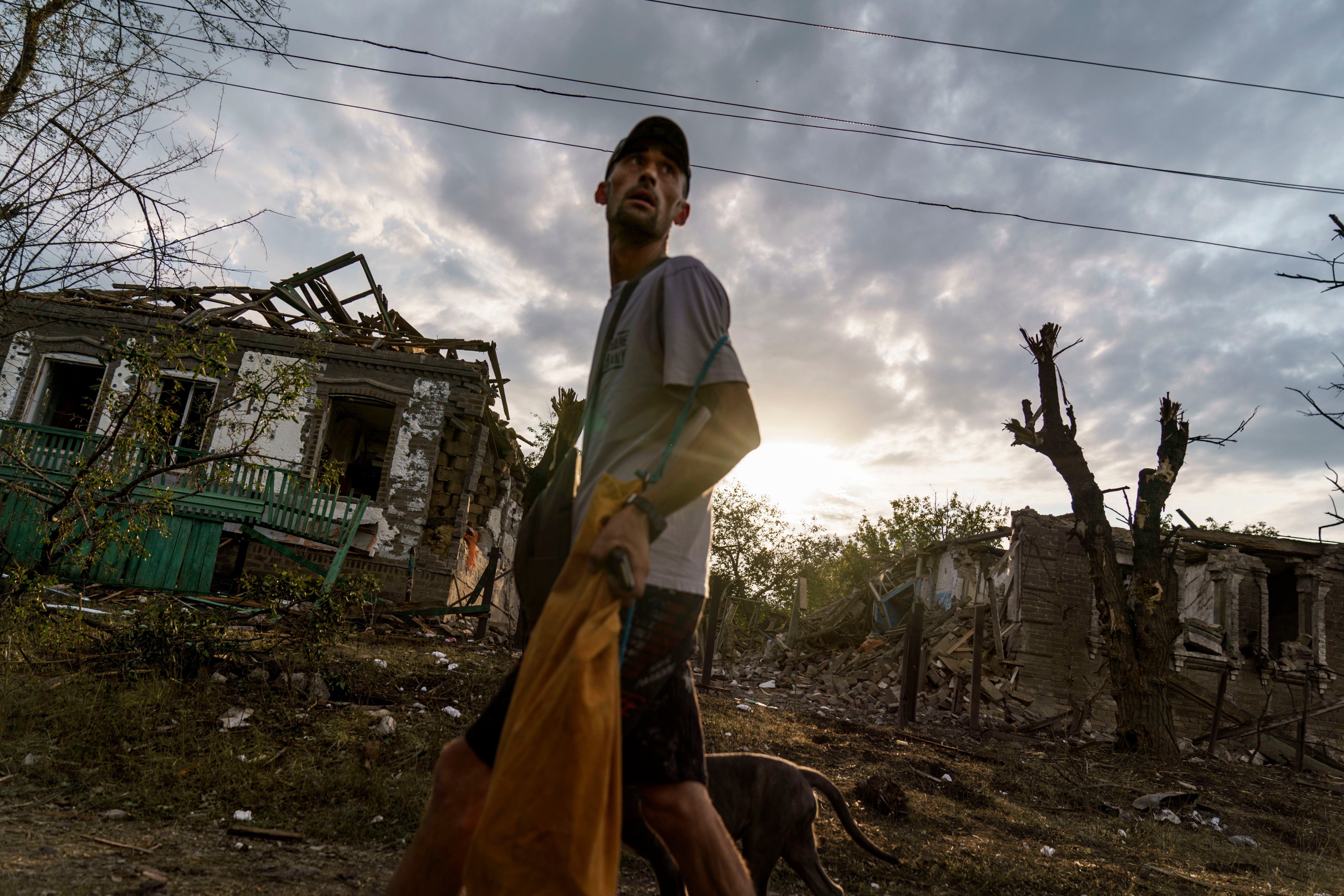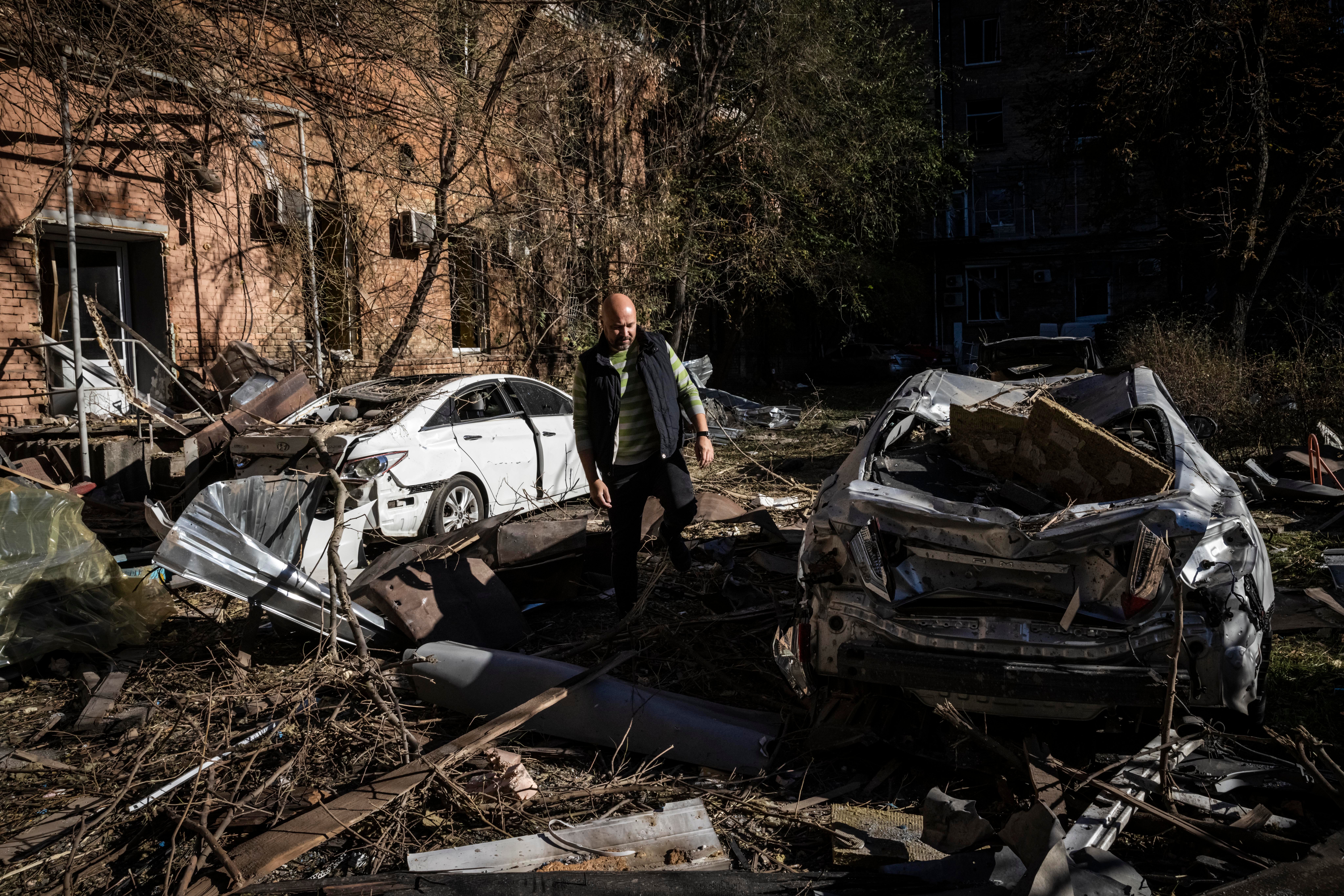
Russia’s “special military operation” in Ukraine has now been raging for more than 11 months, the conflict continuing to record devastating casualties and force the mass displacement of millions of blameless Ukrainians.
Vladimir Putin began the war by claiming Russia’s western neighbour needed to be “demilitarised and de-Nazified”, an entirely baseless pretext on which to launch a landgrab against an independent state that happens to have a Jewish president.
Ukraine has fought back courageously ever since and continued to defy the odds by defending itself against Russian onslaughts with the help of Western military aid.
Last autumn, Volodymyr Zelensky’s forces launched a major counter-offensive to retrieve the besieged city of Kharkiv and succeeded in driving Russian “orcs” out of Kherson but, as Ukraine’s resistance grows, Mr Putin’s threats of escalating the fight grow too, causing concern globally about the prospect of nuclear warfare being unleashed.
Mr Zelensky has said Russian officials had begun to “prepare their society” for the possible use of nuclear weapons but added that he does not believe the Kremlin is ready to use them.
The president believes action is needed now to avert that scenario, pointing out that Russia’s threats pose a “risk for the whole planet” and that Moscow has “made a step already” by occupying the Zaporizhzhia nuclear power plant, Europe’s largest nuclear station.
In response to the ever-growing sense that his invasion has backfired, Mr Putin staged a televised address in September in which he ordered a partial military mobilisation of 300,000 reservists and reiterated his threat to use nukes against the West, a major escalation of his rhetoric in which he assured the world: “It’s not a bluff.”
The Kremlin’s faltering troops, otherwise saddled with outmoded equipment and sub-standard supplies, have employed brutal siege warfare tactics throughout the war, surrounding Ukraine’s cities and subjecting them to intense shelling campaigns, a strategy previously seen in Chechnya and Syria.
Ukrainian cities in the east and south have been battered by Russian missiles in pursuit of gradual territorial gains, while the targeting of residential buildings, hospitals and nurseries have led to outraged accusations of civilians being intentionally targeted and of war crimes being committed on a massive scale.
The discovery of mass graves in towns like Bucha and Izium have shocked the world.
Mr Zelensky’s initial appeals for Nato to implement a no-fly zone remain unanswered as the West fears such an act would be interpreted as a provocation by Russia and draw the alliance into a much larger war over Eastern Europe.
However, US president Joe Biden, his European counterparts Rishi Sunak, Emmanuel Macron and Olaf Scholz and UN secretary general Antonio Guterres have all condemned the Kremlin’s “unprovoked and unjustified” invasion and promised to hold it “accountable”, with the West introducing several rounds of tough economic sanctions against Russian banks, businesses and oligarchs while supplying Ukraine with additional weapons, hardware and defence funding.
Tanks from the US, Britain and Germany are now being supplied for the first time.
While those gestures are welcome, the allies have also faced criticism for not doing enough to support the millions of refugees from the conflict, who have fled their homeland for neighbouring states like Poland, Hungary, Slovakia, Romania and Moldova.

But what are the key issues behind the conflict, where did it all begin and how might it unfold?
How did the crisis start?
Rumbling tensions in in the region first began in December 2021 when Russian troops amassed at its western border with Ukraine, creating widespread international concern but not acting until the final week of February 2022, when Mr Putin moved to officially recognise the pro-Russian breakaway regions of the Donetsk People’s Republic (DPR) and Luhansk People’s Republic (LPR) as independent states.
This enabled him to move military resources into those areas, in anticipation of the coming assault, under the guise of extending protection to allies.
That development meant months of frantic diplomatic negotiations pursued by the likes of US secretary of state Antony Blinken, Mr Macron, Mr Scholz and then-UK foreign secretary Liz Truss in the hope of averting calamity had ultimately come to nothing.
Going back even further to 2014 gives the current situation more context.
Russia annexed Ukraine’s Crimean Peninsula that year in retaliation after the country’s Moscow-friendly president Viktor Yanukovych was driven from power by mass protests.
Weeks later, Moscow threw its weight behind two separatist insurgency movements in Ukraine’s eastern industrial heartland, the Donbas, which eventually saw pro-Russian rebels in Donetsk and Luhansk declare the DPR and LPR independent states, although they went entirely unacknowledged by the international community.
More than 14,000 people have died in the fighting that has been ongoing throughout the intervening years, devastating the region.
Both Ukraine and the West have accused Russia of sending troops and weapons to back the rebels but Moscow has denied the allegations, stating that Russians who joined the separatists’ cause did so voluntarily.

A 2015 peace accord – the Minsk II agreement – was brokered by France and Germany to help end the bloodshed. The 13-point agreement obliged Ukraine to offer autonomy to separatist regions and amnesty for the rebels while Ukraine would regain full control of its border with Russia in the rebel-held territories.
The agreement is highly complex, however, because Moscow continues to insist it has not been a party in the conflict and is therefore not bound by its terms.
In point 10 of the treaty, there is a call for the withdrawal of all foreign armed formations and military equipment from the disputed DPR and LPR: Ukraine says this refers to forces from Russia but Moscow has repeatedly denied it has any of its own troops in the contested regions.
In 2021, a spike in ceasefire violations in the east and a Russian troop concentration near Ukraine fuelled fears that a new war was about to erupt but tensions abated when Moscow pulled back the bulk of its forces after manoeuvres in April.
How is the situation at present?
After months of costly and violent warfare, it is believed that Russian citizens are finally beginning to see through the fog of Kremlin propaganda and understand Mr Putin’s misjudgement of the war for what it is.
Despite being the aggressor, their country has suffered devastating losses and economic consequences too as a result of its leadership’s actions and a growing reluctance to see more conscripts killed and living standards fall, especially in support of a war so ill-defined, is likely and could eventually lead to street protests.
Sir Jeremy Fleming – director of the intelligence, cyber and security agency GCHQ – said Russians are now feeling the consequences of the Kremlin leader’s “war choice”.
In October, Russia responded to Ukrainian strikes on a major bridge connecting Crimea to its territory by launching a widespread missile bombardment of Ukraine, some of which killed civilians in Kyiv.
Mr Putin called the destruction of the bridge along the Kerch Strait “an act of terrorism aimed at destroying critically important civilian infrastructure”.
In response to these assaults, Mr Zelensky accused Russia of trying to wipe his country “off the face of the earth” while his foreign minister, Dmytro Kuleba, added that the strikes show Mr Putin “is a terrorist who talks with missiles.”

Meanwhile, the West continues to assess the risk of nuclear warfare.
Mr Biden has warned explicitly that the conflict could lead to “nuclear armageddon.” However, the White House has insisted that it has no reason to believe there is an “imminent” threat of Mr Putin using such weapons just yet.
But the Kremlin leader did make clear in that September address that Russia would consider the use of nuclear weapons against Nato if its territory were to be threatened as a result of the invasion.
At the time, Mr Putin warned: “To those who allow themselves to make such statements about Russia, I would like to remind you that our country also has various means of destruction, and for some components more modern than those of the Nato countries.”
The threat was the most significant suggestion of the use of nuclear weapons by a leader with access to those weapons in decades and threatened to return Washington and Moscow to the height of tensions not seen since the Cold War.
While Russia’s recent retreat from Kherson unquestionably marks a triumph for the Ukrainian military, it has also left Mr Putin “humiliated”, as Tory MP Tobias Ellwood has pointed out, warning that there could be dire consequences.
“There’s huge concern that he’s going to go more extreme,” he said.
“He’s going to find more imaginative ways to raise the stakes.”
The fighting has become entrenched around the towns of Bakhmut and Soledar since late 2022, with Russian Wagner Group mercenaries battling Ukrainian forces in heavy mud, rubble and sub-zero temperatures in what has become a savage war of attrition.
What might happen next?
Western leaders have been united in condemning Mr Putin’s “utter brutality”, with Mr Guterres saying he was “deeply shocked” by recent missile strikes against Ukrainian cities.
“They constitute another unacceptable escalation of the war and, as always, civilians are paying the highest price,” added UN spokesperson Stephane Dujarric.
Nato’s secretary general Jens Stoltenberg condemned the “horrific and indiscriminate” attacks while the president of the European Commission, Ursula von der Leyen, said she was “shocked and appalled” by it.
Her European Council counterpart, Charles Michel, unequivocally labelled Russia’s actions as war crimes.
It is feared that Mr Putin could now resort to even more drastic measures as the one-year anniversary of the war approaches, given that he will be under enormous pressure to present demonstrable “wins” to a Russian public growing impatient with a futile conflict.
The prospect of the war finally spilling over Ukraine’s borders and engulfing the rest of Europe can also not be dimissed.







